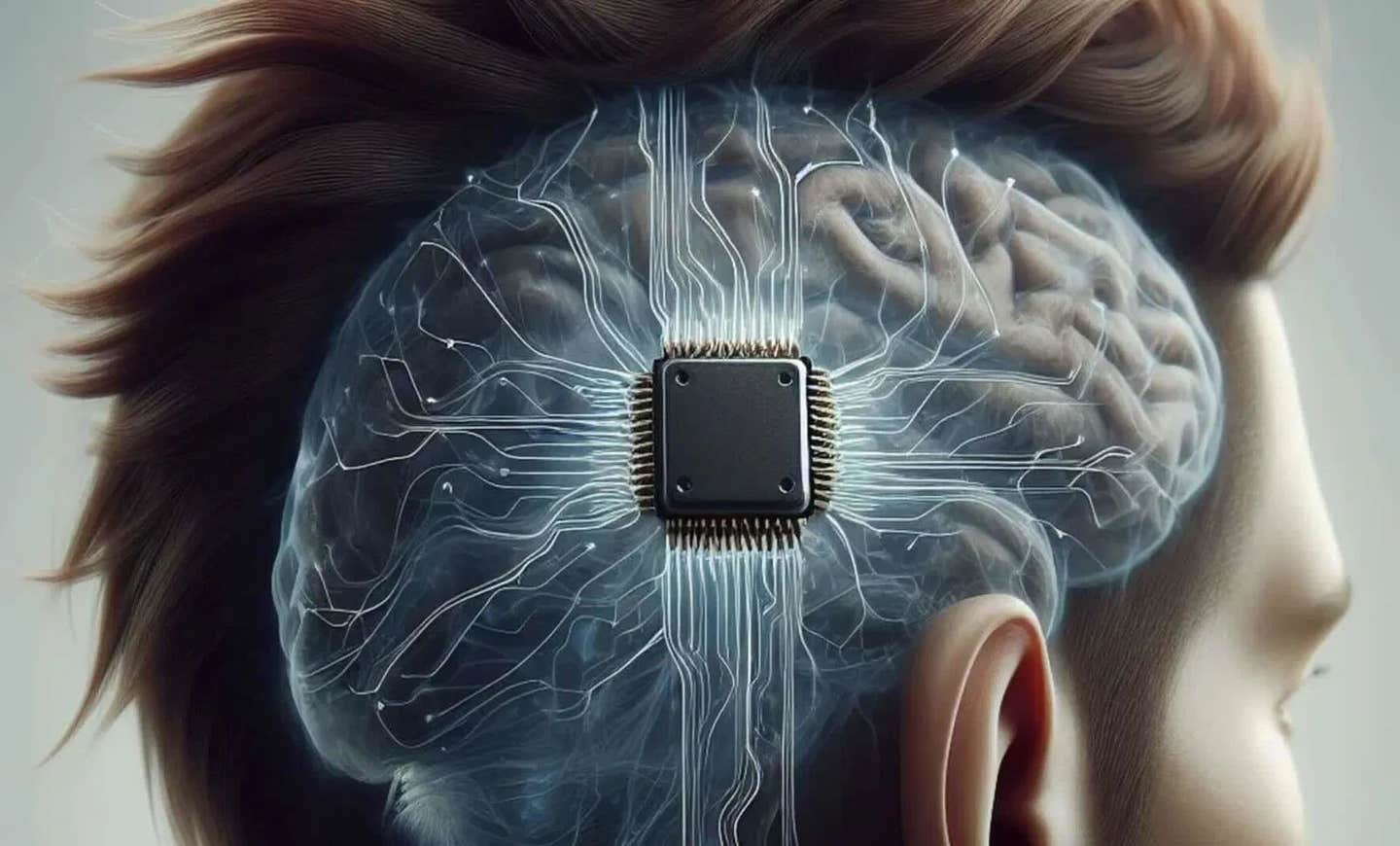Revolutionary brain implant converts thoughts to text with over 90% accuracy
Miniaturized brain-machine interface translates thoughts into text, promising new communication possibilities for paralysis patients.

EPFL introduces a groundbreaking miniaturized brain-machine interface (MiBMI), enabling accurate, real-time translation of thoughts into readable text. (CREDIT: Pixabay/AI generated)
Brain-machine interfaces (BMIs) are becoming lifelines for people facing severe motor impairments. For many individuals with conditions like amyotrophic lateral sclerosis (ALS) or spinal cord injuries, BMIs offer hope. Yet, traditional systems remain bulky and consume too much power for everyday use, limiting their practicality.
Now, researchers at EPFL have introduced a groundbreaking solution: a Miniaturized Brain-Machine Interface (MiBMI). This compact, energy-efficient innovation stands poised to redefine what's possible in neurotechnology. Unlike its predecessors, MiBMI fits onto just two tiny silicon chips, covering an area smaller than a fingernail. Such compactness means these chips could easily be implanted into patients, significantly enhancing their quality of life.
Transforming Thoughts into Text
MiBMI works by capturing neural signals when you think about writing. Electrodes implanted within the brain detect the specific patterns of activity tied to imagined handwriting. The system then decodes this activity into actual text displayed on a screen in real-time. It's an extraordinary leap forward, offering individuals who cannot speak or move a powerful new communication tool.
The core of this innovation is a sophisticated yet simple decoding method. The system identifies unique markers known as distinctive neural codes (DNCs). These markers drastically simplify the decoding process, focusing only on essential brain activity.
By reducing complex neural signals into smaller, manageable data units, the MiBMI achieves rapid, accurate translation of thought to text. According to Mohammed Ali Shaeri, lead author from EPFL, "the chip processed data from previous live recordings with an impressive 91% accuracy in converting handwriting activity into text."
Currently, MiBMI decodes up to 31 distinct characters, surpassing any other integrated system developed so far. However, Shaeri notes the potential extends even further, suggesting, "We are confident we can decode up to 100 characters. But a handwriting dataset with more characters isn't available yet."
Related Stories
Efficiency in a Tiny Package
Aside from accuracy, MiBMI's compact size is one of its greatest strengths. The entire chipset occupies only 2.46 mm² and consumes less than one milliwatt of power, a huge improvement over earlier models. This remarkable miniaturization means MiBMI can be fully implanted, enhancing patient safety and comfort.
Mahsa Shoaran, director of EPFL’s Integrated Neurotechnologies Laboratory (INL), emphasizes its revolutionary potential. "MiBMI allows us to convert intricate neural activity into readable text with high accuracy and low power consumption," Shoaran explains. "This advancement brings us closer to practical, implantable solutions that can significantly enhance communication abilities for individuals with severe motor impairments."
Such breakthroughs are essential since traditional BMIs have relied heavily on external computers to process neural signals. MiBMI's real-time recording and processing capabilities eliminate this cumbersome step, dramatically improving its usability and convenience.
Smarter and Faster Technology
MiBMI is built around a clever use of machine learning, specifically a streamlined form called linear discriminant analysis (LDA). This method makes decoding quicker, uses significantly less memory, and reduces complexity by hundreds of times compared to conventional techniques.
For example, MiBMI’s innovative approach achieves a memory reduction of around 100 times and computational simplification by approximately 320 times.
These improvements are crucial for practical use, making the device fast and efficient enough to process complex neural information almost instantly. Such efficiency opens possibilities beyond simple motor tasks. "We are exploring various applications beyond handwriting recognition," says Shoaran. "Collaborations are underway to test speech decoding and even precise movement control."
Broadening Possibilities
The versatility of MiBMI is another compelling feature. The system has already demonstrated its ability to decode diverse neural responses, such as recognizing different acoustic signals in experiments with rats, achieving 87% accuracy. This flexibility shows the potential for broader medical applications, including managing epilepsy, monitoring movement disorders, and enhancing communication through speech decoding.
Moreover, MiBMI integrates advanced machine learning into its tiny structure. Its embedded algorithms allow the chipset to quickly learn and recognize patterns from neural activity. Such integration ensures the system remains adaptable and effective for individual users, significantly shortening the learning curve associated with BMI systems.
The collaborative spirit at EPFL amplifies this technology's potential. Shoaran and Shaeri have joined forces with prominent researchers like Grégoire Courtine, Silvestro Micera, Stéphanie Lacour, and David Atienza. These collaborations promise to propel MiBMI into various medical and neurological contexts, further enhancing its real-world applications.
Shoaran remains optimistic, stating, "Our goal is to develop a versatile BMI tailored to various neurological disorders, providing broader solutions for patients."
As BMIs continue evolving, MiBMI stands at the forefront, offering new hope for those with limited movement or communication abilities. By making these devices smaller, smarter, and more efficient, researchers at EPFL are opening doors once thought impossible to reach. Soon, a world where thought alone enables seamless communication might become reality, offering renewed independence to those who need it most.
Research findings are available online in IEEE Journal of Solid-State Circuits.
Note: Materials provided above by The Brighter Side of News. Content may be edited for style and length.
Like these kind of feel good stories? Get The Brighter Side of News' newsletter.



